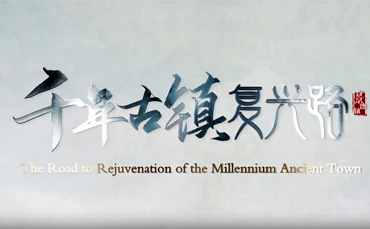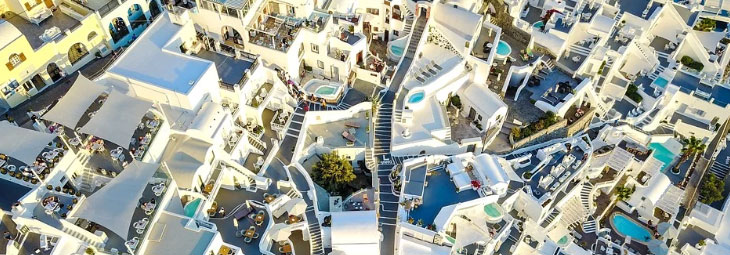


The Road to Rejuvenation of the Millennium Ancient Town
With a long history of ceramics, Jingdezhen has a history of more than 2,000 years of porcelain making. and was once referred to as "the world's earliest industrial city" by British scholar Dr. Joseph Needham. It supports a city's millennial development with a single industry, which is unparalleled in the world.
As it entered the 21st century, Jingdezhen, like many other old industrial cities in China, is facing difficulties such as resource depletion, environmental degradation, and an increase in unemployment. Faced with challenges, Jingdezhen has taken the preservation and utilization of industrial heritage as a breakthrough strategy, promoted the transformation and upgrading of traditional industries, and forged a path of sustainable development for old industrial city.
As a second-generation of porcelain, Liu Zili went from a ceramic worker to the former director of a state-owned porcelain factory. He experienced the rise and fall of Jingdezhen's ceramic industry and became a promoter of the preservation and utilization of Jingdezhen's industrial heritage.
Liu Zili: In our city, there are more than 40 old factories like ours scattered throughout every area of the city. In fact, it has laid the foundation for our city. The unique charm of industrial heritage. Let these cultural heritage be used by contemporary people. Those space is not separated from the city, conversely it becomes the most active space in the city.
A renovation project of the old factory area centered around the state-owned Yuzhou Porcelain Factory, Taoxichuan transformed the old factory area into a Yi Space for incubating young makers, a studio for cultivating craftsmen, and a live broadcast base for showcasing ceramic products. People can also do pottery, attend lectures and immerse themselves in ceramic culture here. The exhibition and online live streaming of original works are non-stop, and the creative market, Taoran Craft Market, Spring & Autumn Market are full of young and vibrant vitality and creativity. This avenue has become a new cultural landmark of Jingdezhen.
At the same time, Taoyangli, not far from Taoxichuan, also experienced a magnificent transformation. With preserving the main structure, style, and appearance, Taoyangli completed the restoration and utilization of the ancient kiln, alleys, and neighborhoods. During the renovation process, Taoyangli followed a thousand year old tradition to build houses, pave roads and construct underground drainage channels by kiln bricks removed from the kiln, which preserved the characteristics of the kiln brick alleys in Taoyangli and achieved the recycling of resources.
As a worker with his father in the porcelain factory's firing workshop at the age of 14, Yu Xilai became a "lane butler" in Taoyangli along with more than 20 old craftsmen and factory directors after retiring,
Yu Xilai: In the past, our workers went to work and worked hard with sweat streaming, go to work with a white shirt, get off work with a dirty one at night. Now take a look, our workers today are decent and sophisticated. This environment is well decorated. Workers work here leisurely.
The fourth generation inheritor of the ceramic family "Sun Gong Kiln", Sun Lixin, has lived here for generations.
Sun Lixin: Four generations have lived in this place .This is the place that we are very familiar with. Not just our lives here but also where we work. Here it is, we found the feeling of a skilled craftsman.
History is frozen and "resurrected" here. Today, in the workshop, inheritors of ceramic intangible cultural heritage are using their ancestral craftsmanship to depict new colors and images.
Sun Lixin: These dazzling porcelain in front of us now, are all fired with natural gas. Everyone knows that in ancient times, our porcelain making, the first is firewood burning. the second is coal burning.The third is oil burning. So when it come to the environment, it will have a certain impact to some extent. So today Jingdezhen is using clean energy. For our Jingdezhen not only does it bring more and more, beyond exquisite porcelain with a high success rate, but also bring us blue sky and white clouds.
Through the preservation, restoration, revitalization, and utilization of heritage, sites, and relics. Nowadays, on the foundation of this millennium city, there are constantly changing scenes and lively creations everywhere.
Jingdezhen has once again demonstrated its strong "porcelain power" attracting more than 60,000 "jingpiao" from more than 40 countries and regions around the world. Among them, many "foreign jingpiao" artists exchange and innovate here, bringing back the prosperous scene of "artisans come from different places and products are exported to all corners of the world" in history.
In Jingdezhen, every "jingpiao" has a reason to stay, and Jingdezhen also provides housing discounts, entrepreneurial support and other supporting policies for them. They start business here, attracting countless ceramic enthusiasts to come and "pilgrimage".
Zhangjie, professor of Tsinghua University, person in charge of Planning and Design of Taoxichuan Cultural and Creative Industry Park Preservation and Renewal Project. Through the conservation plan for this heritage site, planning of relevant urban design systems, about 30 items in this planning content from architectural design to landscape design, we make this city in these old factories.in the old neighborhood, full of today's feature of urban vitality. This feature is diverse, meets the walkable urban blocks we advocate for today. Only in this way, can we achieve low-carbon and green development. What everyone can see today in the most representative area of Taoxichuan. There are young artists of ceramics from all over China, and artists loving ceramics from around the world gathered here.
Today’s Jingdezhen has a completely new urban landscape and rapid development. Jingdezhen has become a new window for the world to experience China's development and perceive Chinese culture, This is the path to rejuvenation and sustainable development of the millennium ancient town.